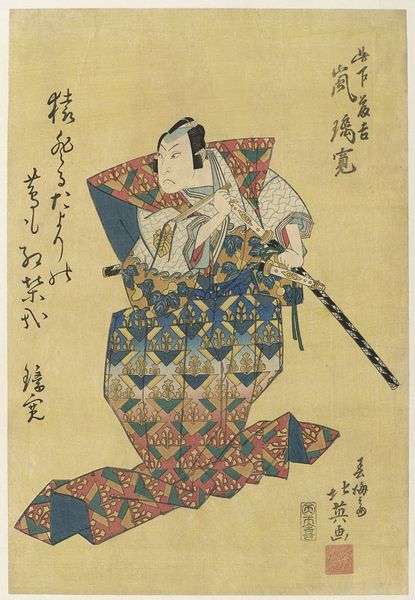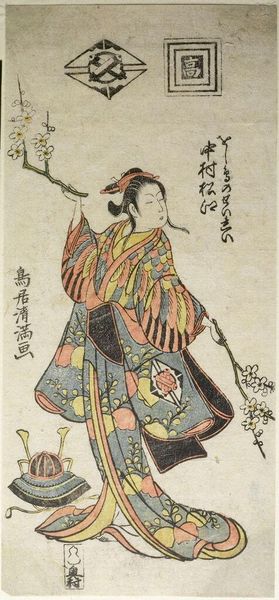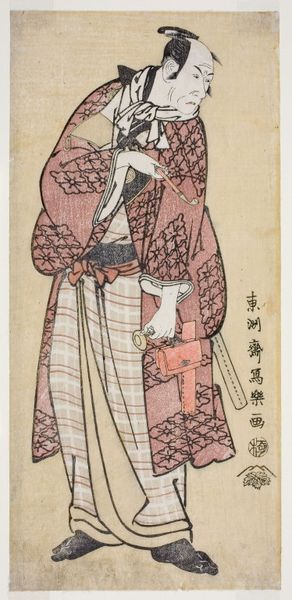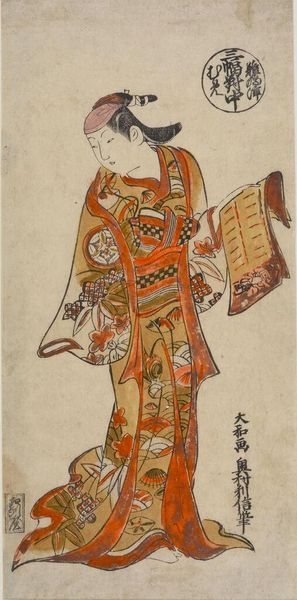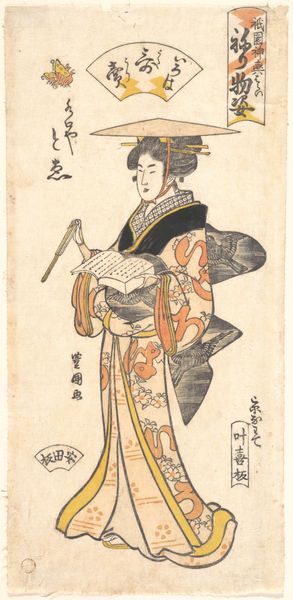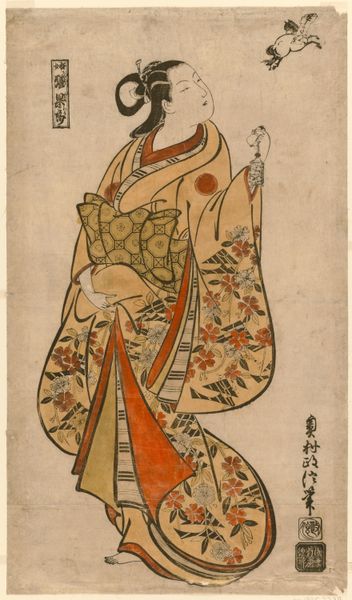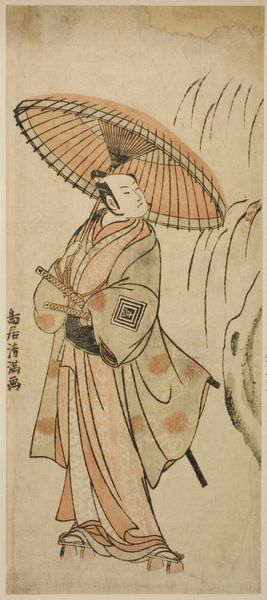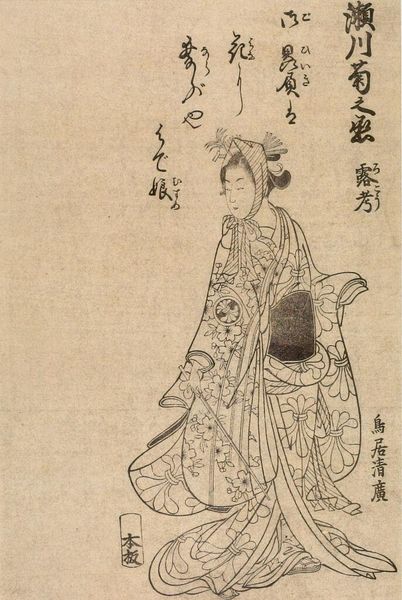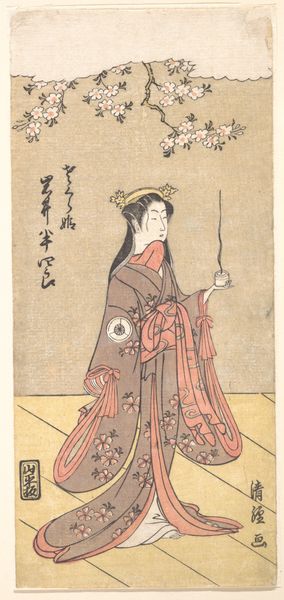
print, woodblock-print
#
portrait
# print
#
asian-art
#
old engraving style
#
ukiyo-e
#
figuration
#
woodblock-print
#
japanese
Dimensions: height 311 mm, width 142 mm
Copyright: Rijks Museum: Open Domain
Curator: So delicate! And look at how those linear elements intersect, almost dance, with the softness of the floral patterns. Editor: Well, we are looking at “Nieuwjaarsdans,” or "New Year's Dance," a woodblock print made around 1753 by Torii Kiyomitsu. I'm drawn to the materials themselves – the paper, the inks, the very specific and demanding process of ukiyo-e printmaking. Curator: Ah, "pictures of the floating world," that ephemeral beauty made so…permanent. It's funny to think about something as fleeting as a dance preserved in this medium. She almost seems to be captured in a bubble. Editor: Exactly. Woodblock prints like this one were far from high art at the time. Think of the workshops, the artisans collaborating. Someone designing, someone carving, someone printing, all reliant on the economics of the pleasure districts, the actors and courtesans. Curator: I suppose I see the figure first, her kimono swirling with pattern. But now that you mention it, yes—I can almost hear the rhythmic thud of the woodblock. The texture adds another layer to my emotional interpretation, almost like a hidden soundtrack. Editor: Look closer still: those patterns aren't just decorative. The layering of robes speaks to the culture of consumption – textiles as a status symbol. What at first looks decorative is, upon closer consideration, structural to the economics of the time. Curator: A mirror to society, even in celebration! It is fascinating that you point that out—almost as if each textile square or patterned stitch represents another contribution to the print as well as society. I do enjoy my subjective interpretation. Editor: The beauty of considering process and materiality is that it reframes the way we look at art, asking who made this, how, and why. This method democratizes art and craft, and allows for insight into the people that are too often left out of historical records. Curator: It makes one think about the quiet labor that allows beauty to emerge. Well, it has been a new perspective for me, to hear it like this. I will not forget it. Editor: And for me, hopefully a push to dive deeper beneath surface aesthetics. Always good to expand beyond pure aesthetics.
Comments
No comments
Be the first to comment and join the conversation on the ultimate creative platform.
